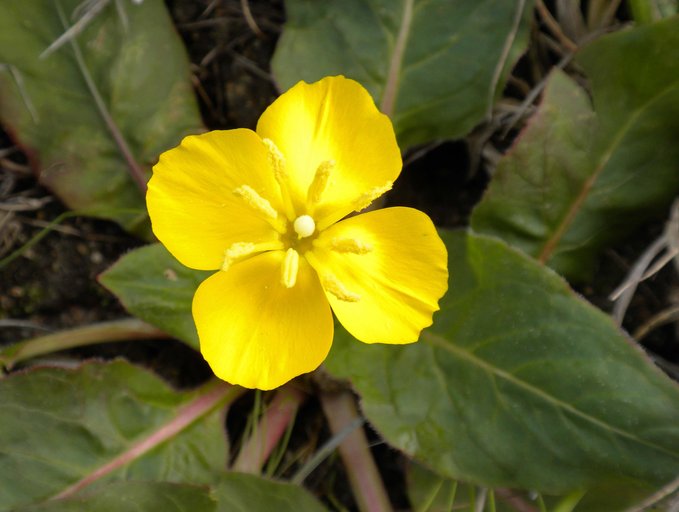
12 Spring Wildflower Species Blooming in the Santa Lucia Mountains
March 29, 2023
By Andrew Evans, Conservation Grazing Associate
Having received more than 54 inches of rainfall on The Preserve so far this water year (from October 2022 to September 2023), we’ll be seeing an abundance and diversity of wildflowers not frequently seen on The Preserve. The seeds of drought-adapted native wildflowers have laid dormant in the soil, waiting for preferred conditions to sprout. A super bloom occurs when the seeds germinate and produce flowers all at once, creating displays visible from afar.
The last super bloom in California was in 2019, when a mesmerizing display of color blanketed The Preserve’s 5,000 acres of grasslands. This year, we’re excited to see how the San Francisquito Flats will change since we conducted a prescribed burn there last fall and then seeded 30 acres with 14 native grasses and flowers using a no-till seed drill, just before the first rains.
Preserve habitats have an immense diversity of native and endemic flowering species. Working in the field, we have already identified over 30 flowers currently blooming. Walking on a grassland trail, whether on Penon, Black Mountain, Vasquez, or the Mesa, look out for these Conservancy favorites:
1. Padre’s Shootingstar

Bloom: February-April
Quite common on The Preserve, the perennial shooting stars (Primula clevelandii) are reliably one of the first to bloom in winter and occurs most abundantly in areas of thin grass cover. With the flower facing the ground and petals flexing upward and ranging from deep magenta to pale white, this flower has a truly unique look! Before forming their fruit, the flowers rotate to face upwards. They disappear almost entirely during summer, only recognizable by any dried seed pods left standing.
2. Death Camas

Bloom: March – May
Do not eat this plant. With relatives common throughout North America, The Preserve’s death camas (Toxicoscordion fremontii) is highly toxic. However, its flowers are quite stunning. Through spring, you can watch as the flowers vertically evolve from bud to flower to fruit as the stalk goes upward. Death camas patches are especially visible driving along Chamisal Pass above Mesa.
3. Checker Bloom

Bloom: May – August
Checker blooms (Sidalcea malviflora) are in the mallow family and are common on The Preserve, especially Penon and the Flats. Though their beautiful pink flower may be mistaken with those of the invasive filarees, the checker bloom is identifiable by its larger, more delicate flower, and its pad shaped leaves.
4. Paintbrush

Bloom: March – June
Paintbrush (Castilleja affinis) can be seen in select areas on The Preserve, including Chamisal pass, Mesa, and Penon Peak. Their bright red color is not actually the flower, but specialized leaves called “bracts,” which envelop the true flower. These bracts can be a flash of vibrant red to lighter shades of pink and orange.
5. Sun Cups

Bloom: February – April
Sun cups (Taraxia ovata), also called goldeneggs, live as a flat florette of green leaves with pink veins. Come spring, bright 4-petaled flowers will burst out from the middle, never rising more than a few inches off the ground. They are most common along Chamisal pass above Mesa Trail, but can appear more sparsely in other areas of The Preserve. Monterey is the bottom-most area of sun cups’ range, so its presence on The Preserve may shift with climate change.
6. Johnny Jump Ups

Bloom: February – April
Also known as golden violets (Viola pedunculata), this perennial Preserve resident paints the foothills of Penon and Vasquez yellow by springtime. Looking like its domesticated pansy counterparts, its amazing to see a native flower look so elegant. This species, like many other local natives, is low to the ground and thrives in short-crop grassland areas.
7. Popcornflower

Bloom: February – April
Common across The Preserve’s grasslands, rusty popcornflower (Plagiobothrys nothofulvus) brings a unique white wash to the early spring. Although many of its relatives are difficult to accurately identify, rusty popcornflower has a distinct rusty/golden colored fuzz at the base of the flower.
8. California Goosefoot

Bloom: March-June
An edgy looking plant, California goosefoot (Chenopodium californicum) thrives in the ground-squirrel laden fields of Penon peak’s snake pit. They have toothy, triangular leaves and cones of small pink flowers.
9. California Saxifrage

Bloom: March-April
A really tiny plant, California saxifrage (Micranthes californica) has saw-tooth leaves that lie flat to the ground, with a shin-height reddish stalk of white flowers eventually emerging from the center. They can be found at edges of shrublands and woodlands and in diverse prairie sites on The Preserve.
10. Purple Sanicle

Bloom: March-May
Purple sanicle (Sanicula bipinnatifida), is common on the Preserve, but not well observed in the county via community science. Its purple clusters of flowers make it easily recognizable, and also set it apart from its yellow-flowered relatives on The Preserve.
11. Fuchsiaflower Gooseberry

Bloom: January-May
One of our few thorny native shrubs, gooseberry species produce edible, but spiky fruit in coyote brush shrublands and oak forest understories. Fuchsiaflower gooseberry (Ribes speciosum) drips all-red flowers and is found in the Mesa area. They are a favorite of hummingbirds, who territorially defend their favorite bush.
12. Redmaids

Bloom: February-May
A vibrant pink flower, redmaids (Calandrinia menziesii) can be found dotting grasslands around many areas of The Preserve. Although they have florets of uniquely shaped leaves, their flowers are unmistakable. Redmaids remain within a couple inches of the ground, so with many grassland flowers, keep your eyes pointed down!
It is important to stay on established trails and leave the wildflowers be. This fabulous springtime phenomenon has a history of inhibiting hikers’ better judgment in California. Many of our native wildflowers are annual species, meaning they live, die, and produce their seed in a single season. If our annuals get stomped, mowed, or picked before they drop their seeds, it greatly limits their ability to bloom in following years. Take a picture and respect the flower!